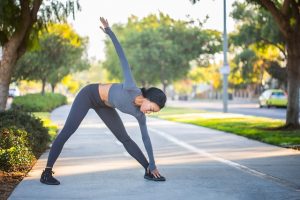Mobility and flexibility are two essential components of overall health and wellness. Mobility refers to the ability to move freely and easily, while flexibility refers to the ability of muscles and joints to stretch and move through their full range of motion.
Stretching is a crucial aspect of maintaining both mobility and flexibility, as it helps to improve range of motion, reduce muscle soreness and tension, and prevent injury.
Introduction to Mobility and Flexibility
 Mobility and flexibility are closely related concepts that are essential for maintaining overall health and wellness. Mobility refers to the ability to move freely and easily, while flexibility refers to the ability of muscles and joints to stretch and move through their full range of motion. Both mobility and flexibility are important for maintaining good posture, balance, and coordination, as well as preventing injury.
Mobility and flexibility are closely related concepts that are essential for maintaining overall health and wellness. Mobility refers to the ability to move freely and easily, while flexibility refers to the ability of muscles and joints to stretch and move through their full range of motion. Both mobility and flexibility are important for maintaining good posture, balance, and coordination, as well as preventing injury.
Maintaining both mobility and flexibility requires a combination of regular exercise, stretching, and other forms of physical activity. This can include activities such as yoga, Pilates, or other forms of exercise that focus on improving flexibility and mobility.
Benefits of Improved Mobility and Flexibility
Improved mobility and flexibility offer a wide range of benefits for overall health and wellness. Some of the key benefits include:
- Improved range of motion: Stretching helps to improve joint mobility, which can help you move more freely and easily.
- Reduced risk of injury: By improving your range of motion, you can reduce your risk of injury during physical activity.
- Improved posture and balance: Stretching can help improve your posture by reducing muscle tension in your back, neck, and shoulders. This can also help improve your balance.
- Reduced muscle soreness and tension: Stretching can help reduce muscle soreness after exercise by increasing blood flow to the muscles.
- Improved athletic performance: By improving your range of motion, you can improve your athletic performance by increasing your speed, agility, and power.
Types of Stretching
There are several different types of stretching that can be used to improve mobility and flexibility. These include:
Dynamic stretching: Dynamic stretching involves moving your body through a range of motion, such as lunges or leg swings. This type of stretching is often used before exercise to warm up the muscles and prepare them for activity.
Static stretching: Static stretching involves holding a stretch for a period of time, such as touching your toes or holding a quad stretch. This type of stretching is often used after exercise to help cool down the muscles and prevent injury.
Foam rolling: Foam rolling involves using a foam roller to massage the muscles and release tension. This can help improve mobility and reduce muscle soreness.
Dynamic Stretching
Dynamic stretching is a type of stretching that involves moving your body through a range of motion. This can include exercises such as lunges, leg swings, or arm circles. Dynamic stretching is often used before exercise to warm up the muscles and prepare them for activity.
The benefits of dynamic stretching include improved range of motion, increased blood flow to the muscles, and improved athletic performance. Some examples of dynamic stretches include walking lunges, high knees, and butt kicks.
Static Stretching
Static stretching involves holding a stretch for a period of time, typically 30 seconds to one minute. This can include exercises such as touching your toes or holding a quad stretch. Static stretching is often used after exercise to help cool down the muscles and prevent injury.
The benefits of static stretching include improved flexibility, reduced muscle soreness, and improved posture. Some examples of static stretches include hamstring stretches, calf stretches, and shoulder stretches.
Foam Rolling
Foam rolling is a type of self-massage that involves using a foam roller to massage the muscles and release tension. Foam rolling can help improve mobility and reduce muscle soreness by increasing blood flow to the muscles.
The benefits of foam rolling include improved flexibility, reduced muscle soreness, and improved athletic performance. Some examples of foam rolling exercises include rolling out the quads, hamstrings, and calves.
Tips for Incorporating Stretching into Your Routine
Incorporating stretching into your routine can be challenging, but it is essential for maintaining mobility and flexibility. Some tips for incorporating stretching into your routine include:
Importance of consistency: Consistency is key when it comes to stretching. Try to stretch at least three times per week to see the best results.
Make it a habit: Incorporate stretching into your daily routine by doing it at the same time every day, such as after your morning coffee or before bed.
Make it enjoyable: Find ways to make stretching more enjoyable, such as listening to music or doing it with a friend.
Incorporate stretching into your workout routine: Stretching can be incorporated into your workout routine by doing dynamic stretches before exercise and static stretches after exercise.
Mobility and flexibility are essential components of overall health and wellness. By incorporating stretching into your routine, you can improve your range of motion, reduce muscle soreness and tension, and prevent injury.
Whether you prefer dynamic stretching, static stretching, or foam rolling, there are many different types of stretching that can help improve mobility and flexibility. So start incorporating stretching into your routine today for better movement and overall health.









